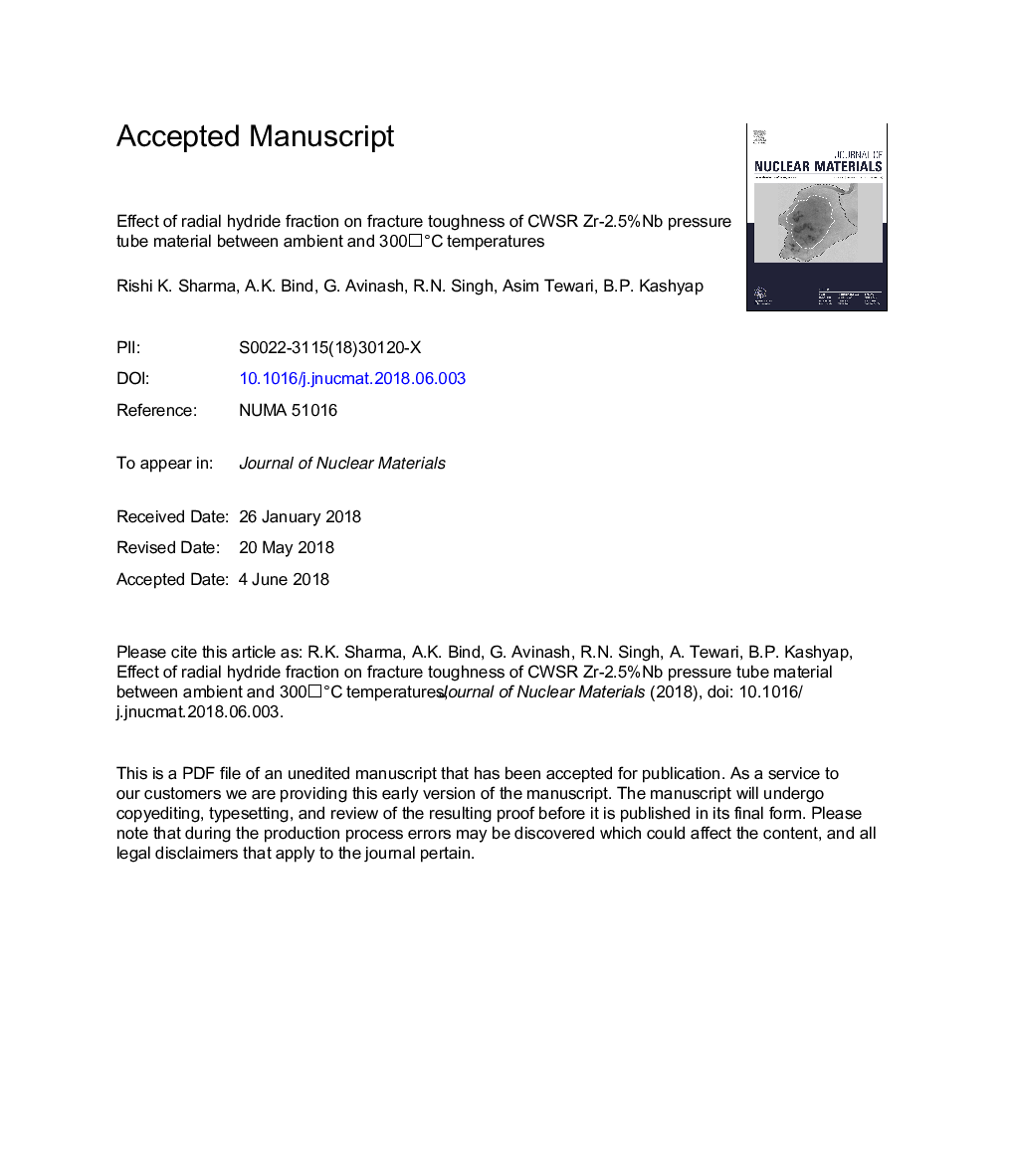| Article ID | Journal | Published Year | Pages | File Type |
|---|---|---|---|---|
| 7962987 | Journal of Nuclear Materials | 2018 | 30 Pages |
Abstract
Fracture toughness of Zr-2.5%Nb alloy pressure tube material containing samples 100 wppm of hydrogen with variable radial hydride fraction was evaluated as per ASTM E1820-13 procedure between 25 and 300â¯Â°C. All the samples exhibited a sharp ductile brittle transition behavior and the transition temperature was observed to increase with increase in radial hydride fraction. The critical crack length (CCL) behavior with respect to the temperature for material containing hydrides of different HCC is presented in Fig. 1. The CCL is calculated for 220 MWe pressure tube dimensions and maximum operating pressure. The CCL is calculated by iterative/recursion method with the formulation as described in CSA-N285.8-10. Fracture toughness properties were observed to improve after the annealing heat treatment due to the decrease in HCC as shown in Fig. 2. The ambient temperature fracture toughness property was observed to be 105.7â¯MPaâm with 100â¯ppm circumferential hydrides and decreased rapidly to 49% with presence of 16.7% radial hydrides as presented in Fig. 2. Further nearly linear reduction in the fracture toughness was observed with increase in radial hydride fraction. Ductile to brittle transition temperature in presence of radial hydrides was observed to increase with increase in HCC as shown in Fig. 2.257
Keywords
Related Topics
Physical Sciences and Engineering
Energy
Nuclear Energy and Engineering
Authors
Rishi K. Sharma, A.K. Bind, G. Avinash, R.N. Singh, Asim Tewari, B.P. Kashyap,
